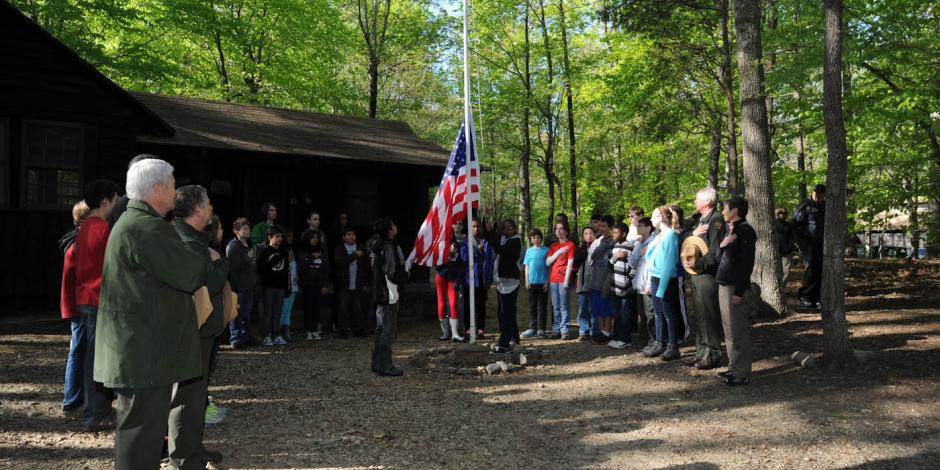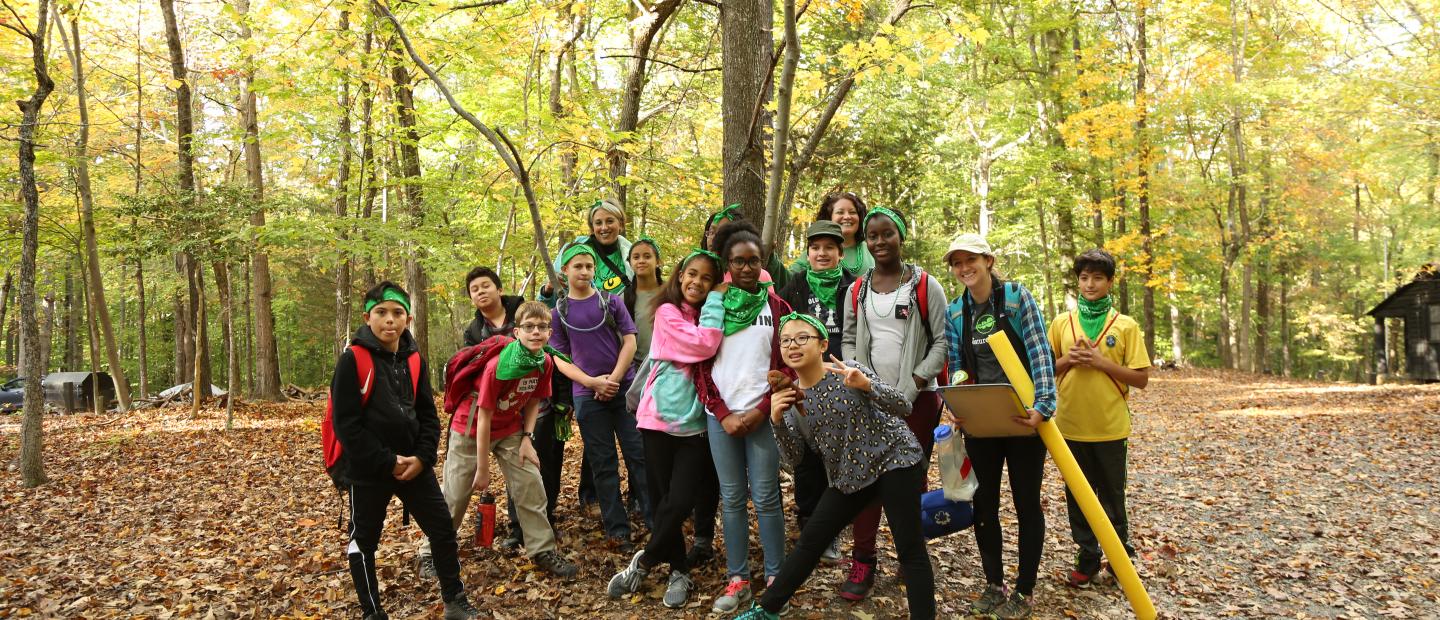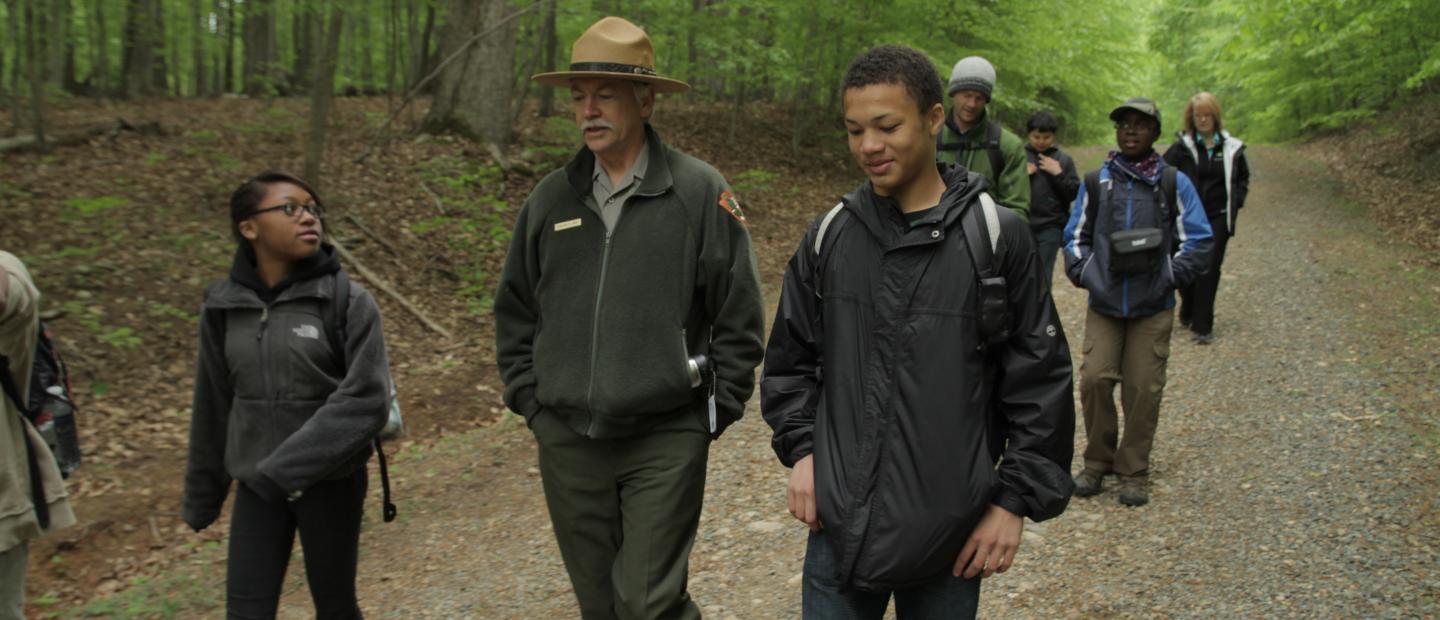Prince William Forest Park Spotlight: Jon and Destry Jarvis

Destry and Jon Jarvis were instrumental to the founding of NatureBridge’s first East Coast campus,” according to NatureBridge Board Member Autumn Saxton-Ross. “Prince William Forest Park is just 35 miles from the nation’s capital. Because of the Jarvis brothers, we are able to continue the original purpose of the park and bring young people from Washington, D.C. and surrounding areas to learn about their environment and to learn about themselves.”

As Franklin Roosevelt assumed the Presidency in 1933, the United States faced an astronomical 25% unemployment rate, a dearth of jobs for young people and the worst economic crisis in United States history. One of Roosevelt’s earliest acts as President of the United States was to create the Civilian Conservation Corps (CCC), a public work relief program that employed hundreds of thousands of Americans for conservation projects.
Destry and Jon Jarvis’s father was one of those CCC workers. He worked and lived in what became Mt. Rogers National Recreation Area in southern Virginia, building the infrastructure of the future park and later exposing his sons to the majesty of the outdoors. He wanted to instill in them a sense of stewardship and joy in nature.
It must have worked — decades later, the brothers are two of the country’s most decorated and accomplished conservationists, with nearly 100 years of experience between them and career paths that have run parallel, yet are remarkably different.

Destry Jarvis’s path took him from a three-year Army service, including a tour in Vietnam during the Vietnam War, all the way to the halls of Congress as an influential private sector consultant and lobbyist.
“I came back from Vietnam and saw these full page ads protesting the clubbing of baby fur seals,” says Destry. “Baby fur seals are white, but only for the first six months of their life, so it was a big thing for furriers to get them young.”
He was inspired and spent six months as a volunteer lobbyist for Friends of Animals, fighting for marine life protection. Destry eventually became a full-time lobbyist for the National Parks Conservation Association (NPCA) and went on to hold senior positions in the NPCA, National Recreation and Park Association, The Corps Network and many other organizations dedicated to preserving public lands, as well as eight years as Assistant Director of the National Park Service.
Jon Jarvis, meanwhile, worked his way up in the National Park Service through the years as a career civil servant, relocating from state to state, saying yes to opportunities as they arose.
“You have to move geographically to move up, so when we decided this was the life we wanted to have, my wife, Paula, and I sat down with the park map of the United States and we circled all the parks we wanted to work in and live in,” says Jon.
“And in all my years, we never worked in a single one of those,” he laughs.
Jon ultimately served as a ranger, superintendent and regional director in parks across the country, from Wrangell-St. Elias National Park & Preserve in Alaska to the National Mall and Memorial Parks in Washington, D.C. In 2009, he was nominated by President Barack Obama and confirmed by the Senate to be Director of the National Park Service, serving for eight years.
One of Jon’s earliest positions was serving in a D.C. area park built by the CCC. Just four hours away from Mt. Rogers National Recreation Area where his father worked for the CCC, Jon became a park ranger for Prince William Forest Park.
The park began as a Recreational Demonstration Area (RDA) because of its proximity to Washington, D.C. RDAs were built by the CCC and designed to introduce District of Columbia children to the outdoors and foster a love of nature. The CCC built roads, bridges, trails and five cabins there, which at the time, were segregated by race — Black and White. What they created became Chopawamsic (later renamed to Prince William Forest Park in 1948), one of two early RDAs that members of Congress could drive to and witness President Roosevelt’s programs in action.
Prince William was one of several parks to struggle with balancing the aspirational national standards set by President Roosevelt with the National Park Service’s decision to abide by state and local “customs” when it came to segregation. As had occurred in Hot Springs National Park in Arkansas and Great Smoky Mountains National Park in North Carolina, Prince William administrators chose to segregate its Black and White visitors into separate cabin houses in accordance with state norms. This archived correspondence from 1939 between Regional Director M.R. Tillotson and Supervisor of Recreation and Land Planning Conrad L. Wirth illuminates the bureaucratic, institutional racism within the National Park Service at the time.
Nearly 40 years after that letter was written, Jon became a park ranger for the National Mall and Memorial Parks, which included Prince William Forest Park. Desegregated by The Civil Rights Act of 1964, its five cabins were available to people of all races and ethnicities, but they didn’t fill with visitors.
“My job was to patrol, make sure nothing was going on, which there rarely was,” says Jon. “The camps and cabins were empty half the time. There was no active promotion of the cabin camps for their original purpose by anyone.”
That underutilization occurred for years, until Jon, in his time as the regional director of the Pacific West Region, heard that NatureBridge was looking to open programs on the east coast. Prince William was the easy choice.
“You hearken back to the whole purpose of these cabins and why they were built in the first place. RDAs were designed to get kids from nearby cities into the woods for experiential education...in the ‘30s!” says Jon. “Everything was already there to make that vision possible.”
“When I was approached about bringing NatureBridge into [Prince William Forest Park], I just said ‘tell me how to help.’”Destry, a member of NatureBridge’s Mid-Atlantic Board of Directors at its inception
Thanks to Jon, Destry and other impactful leaders and passionate teachers, NatureBridge has served 8,964 kids since 2012 in Prince William Forest Park. After nearly 80 years, the park is living up to the promise of experiential education that was made in the 1930s. On the very same grounds where segregated housing was built, NatureBridge centers equity in its student programs. Not only is the promise being realized, but it is being expanded and made better for the next 50 years and beyond.
In addition to the Jarvis brothers, none of this would have been possible without the visionary leadership provided by then Prince William Forest Park Superintendent Vidal Martinez and his team working alongside Vanessa Morel and other NatureBridge staff. They brought the education mission to life at this Piedmont forest gem in an inspiring partnership that continues today.
“The Park Service] provides the infrastructure and the safety net, and what NatureBridge does aligns with our mission. It provides the kind of program that NPS really can’t; something hands-on with kids,” says Jon. “I think it’s a good marriage. In Prince William, it’s been great so far.”
Destry and Jon are collaborating on a book; one that examines the politicization of the National Park Service over time and leans on what they’ve learned from their parallel, noncompeting paths.
“He’s been inside and I’ve been outside. I tell stories about lobbying Congress and he tells stories about managing parks,” says Destry.
“The best places in America are in the National Park System by design — by intent. Making those parks the best version of themselves has been an engaging endeavor for 50 years…it still is.”
On a smaller scale, but in an equally profound way, NatureBridge is proud to be able to say the same.

